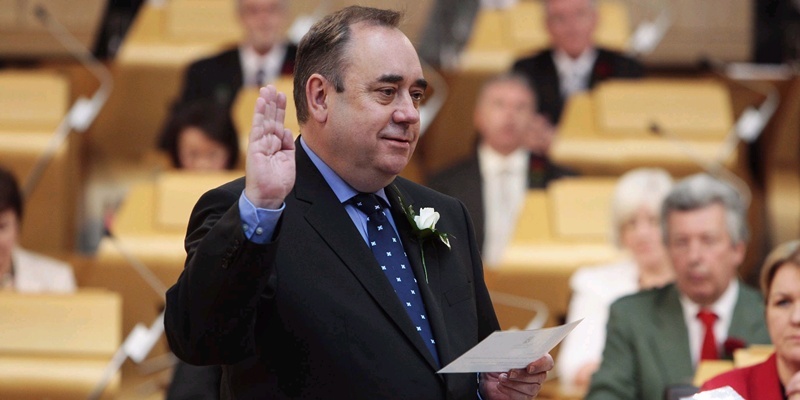A host of languages was evident at Holyrood as the new intake of MSPs were sworn into office.
Of the 129 to swear allegiance, 48 were new, the largest fresh intake since devolution, and languages including Gaelic, Scots, Italian, Arabic and Urdu were used.
Before they officially take their seats, all MSPs must promise to “be faithful and bear true allegiance to Her Majesty, Queen Elizabeth, her heirs and successors.”
The requirement is known to cause unease among some sections of the parliament, and First Minister Alex Salmond pointed that out on behalf of his party members.
Before taking his oath in front of a packed chamber, he said, “The Scottish National Party’s primary loyalty is to the people of Scotland, in line with the Scottish constitutional tradition of the sovereignty of the people.”
There were several signs of protest at the requirement to pledge allegiance to the Queen.
The new Aberdeen South and North Kincardine MSP, Maureen Watt, made a public display of crossing her fingers while taking the oath a traditional sign of making an insincere promise.
Meanwhile, known republican Roseanna Cunningham chose to affirm her oath rather than make a religious promise.
Speaking to The Courier afterwards the Perthshire South and Kinross-shire MSP appeared to confirm she had decided to affirm due to her republican beliefs.
MSPs have the choice of swearing the oath, ending with “so help me God,” or they can choose to “solemnly and sincerely declare and affirm” their loyalty in a non-religious promise.
“Everybody knows my views on this,” she said. “I chose to affirm and people can make of that what they will.”
Before making their pledges, two Labour MSPs, Neil Findlay and Elaine Smith, separately read out a statement distancing themselves from the pledge.
“Before taking the oath, I wish to state that the people of Scotland should be citizens and not subjects, and my allegiance should first and foremost be to them,” they said.
However, both acknowledged they must make the statement to legally represent their constituents.Light reliefOutgoing presiding officer Alex Fergusson, who took charge for the last time before his successor was appointed, began by introducing Mr Salmond as MSP for the wrong constituency.
Mr Fergusson, who was elected MSP for Galloway and Dumfries West, incorrectly called the First Minister forward as the member for Aberdeenshire West.
He later corrected himself, pointing out Mr Salmond was elected to represent Aberdeenshire East.
Further light relief was provided by Conservative MSP Jamie McGrigor, who stumbled while repeating back his full name James Angus Roderick Neil McGrigor.
Despite the bitter election campaign, and the routing of opposition parties by the SNP, the atmosphere at Holyrood was relaxed.
Parliament’s 69 SNP MSPs wore white roses on their lapels from the poem of the same name by Hugh MacDiarmid, while Labour members wore red roses.
Some were dressed in kilts and other traditional dress, including a sherwani with a tartan plaid worn by Glasgow MSP Humza Yousaf.
The chamber also witnessed the swearing-in of the first blind MSP, Dennis Robertson, who took the oath while accompanied by his guide dog, Mr Q.
Photo by Andrew Cowan/Scottish Parliament.
